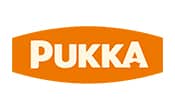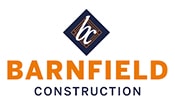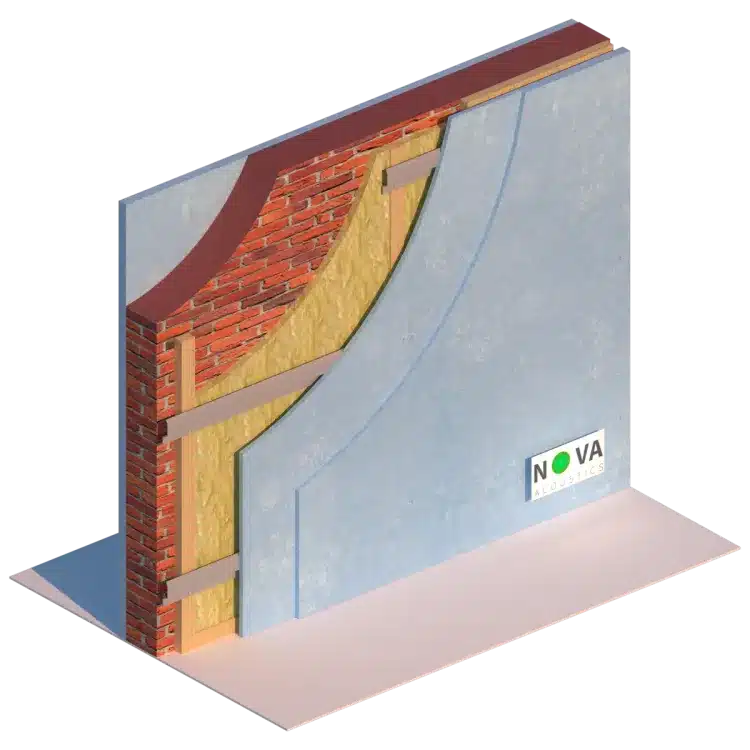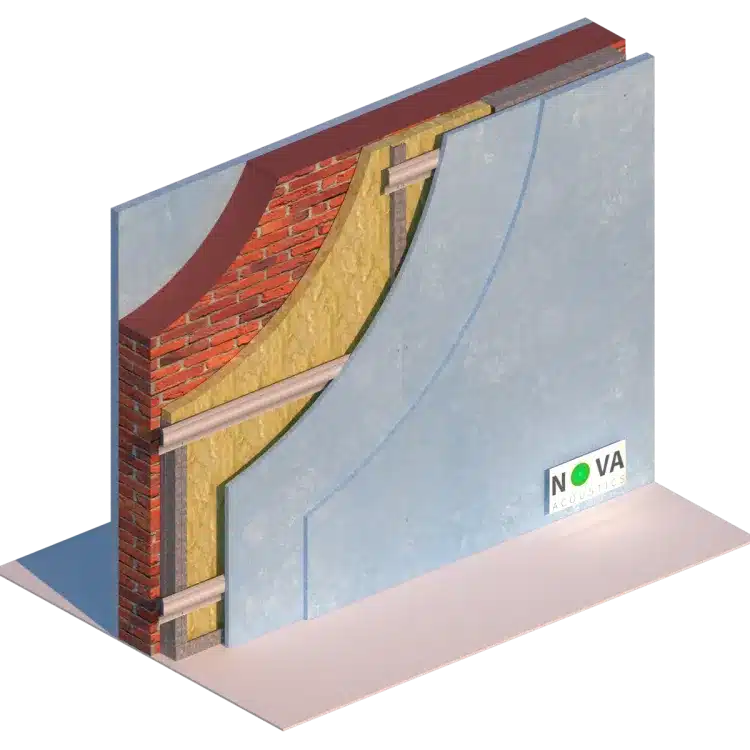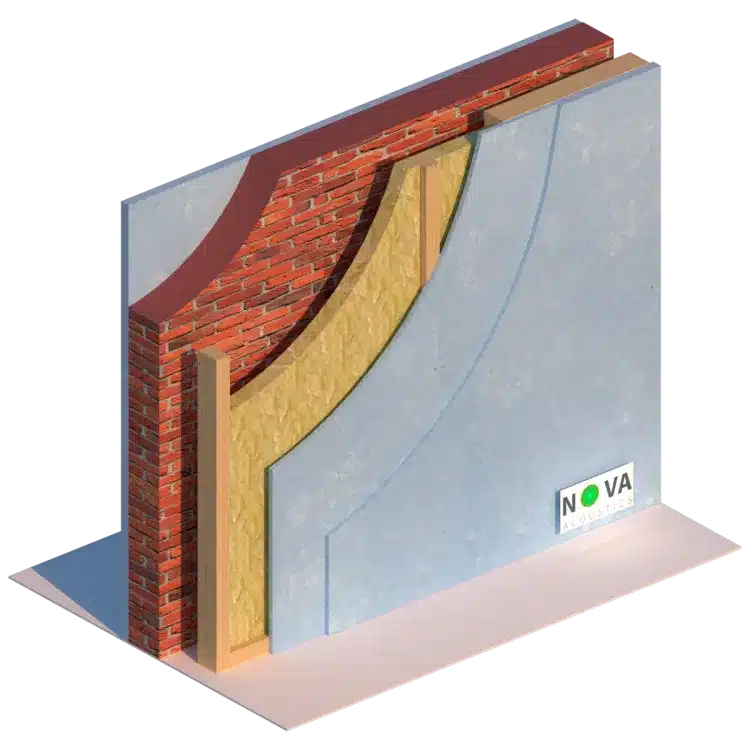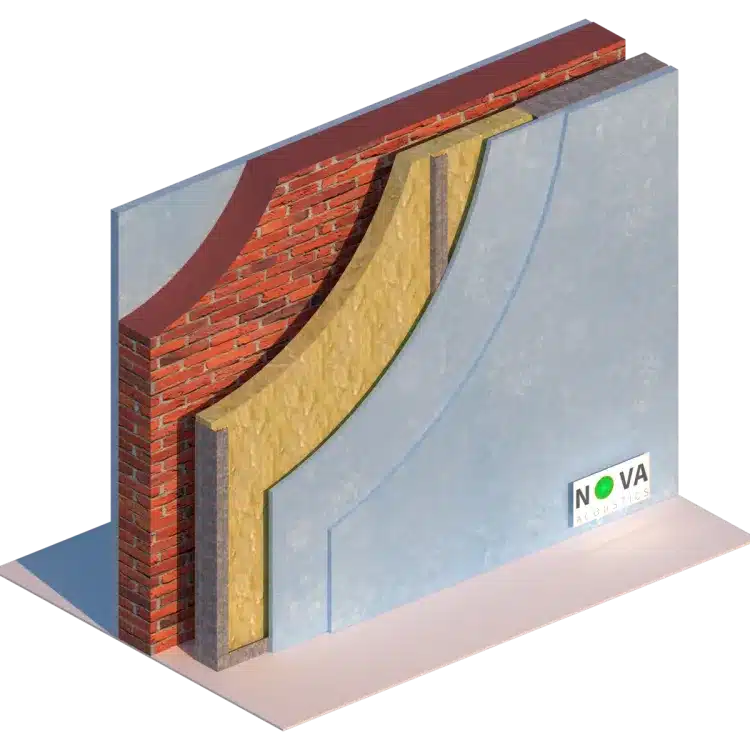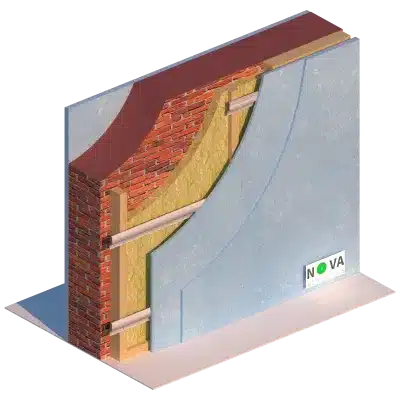Soundproofing Walls
Soundproofing Walls for Part E
We, unfortunately, do not provide consultancy or products for domestic noisy neighbour issues. The most common question we are asked is “How do I soundproof my walls to ensure I pass my Part E sound test?”. You are in the right place as we can guide you through this process with ease, we have numerous designs we can provide and can also discuss bespoke soundproofing solutions for soundproofing walls.
Firstly, as a developer, you need to consider what acoustic performance you need from the party wall. We can design soundproofing for your wall to just pass a Part E sound test or we can design soundproofing for your walls to achieve an excellent level of sound insulation compared to Part E’s minimum requirements.
See Also...
How much do I need to soundproof walls to achieve Part E compliance?
Airborne Noise
43
New Build DnT,w + Ctr
45
Impact Noise
64
New Build LnT,w
62
43 – 46 – Poor / Average
47 – 50 – Good
50 – 53 – Very Good
54 – 57 – Excellent
45 – 48 – Poor / Average
49 – 52 – Good
53 – 56 – Very Good
57 – 60 – Excellent
61 – 64 – Poor / Average
57 – 60 – Good
53 – 56 – Very Good
49 – 52 – Excellent
59 – 62 – Poor / Average
55 – 58 – Good
51 – 54 – Very Good
47 – 50 – Excellent
What are the principles of wall soundproofing?
We’ve all been in homes or flats where you can hear a person walking across the floor in the room directly above. This is particularly noticeable in buildings which have hardwood or marble floors and apartment buildings which have not been converted to a particularly high standard.
One of the best ways to reduce the sound of people walking on the floor above is to decouple the ceiling structure from the floor joists. This can be done using a Mute Clip System, a Resilient Bar System, A suspended MF Ceiling or an Independent Ceiling to decouple of the SoundBloc plasterboard linings from the joists above. Second to this decoupling the floor and creating a floating floor creates a suspension in the floor and decouples the cosmetic floor finish from the sub floor and minimise impact noise transference.
The same kind of system can also be used on the walls by creating a staggered or double stud wall which helps to reduce the spread of sound waves and vibration through the partition wall. Ideally, two layers of studwork should be installed with a good quality and high density acoustic mineral wool between the studs to reduce sound transmission even further.
One of the key ways to improve the acoustic insulation of a party floor or wall is to ensure there is adequate mass, this can be done by using one of the higher mass mineral wool products mentioned above. There are also a number of Mass Loaded Vinyl products which can be used to apply to floors or walls. Finally, using SoundBloc, Duraline or SoundPlank ensures that your plasterboard linings also have the optimum mass. It is very challenging to achieve the requirements of Part E of the Building Regulations when using standard 12.5mm plasterboard on your ceiling.
For sound to travel through a wall, it actually has to move, hence the vibration. By making the walls heavy and a lot more rigid, they become harder to move, meaning the vibrations will be reduced. Some cost-effective choices for making walls heavier include plywood, OSB, and cement board. Though a heavy wall will still vibrate somewhat and you will still hear low frequencies, the sound will be reduced dramatically.
One of the key areas to guarantee the acoustic insulation performance you are aiming for is by achieving an air tight seal. Air is like water, if there is any gaps, holes or cracks it will find a way through. Poor sealing is one of the most common reason for Sound Test Failures and is so easy to overcome.
For example, with a timber floor construction take the following steps:
Insulate between the joists with Rockwool RW45 and ensure this is tightly fitted between the timbers. Cut the insulation slightly proud of the joist spacing so that it holds itself in place.
Ensure you leave an air cavity of 25 – 50% of the joist, this significantly improves the floors performance, never overfill with mineral wool and NEVER use Kingspan.
On the underside of the ceiling, Install your ceiling system, Resilient Bars or Mute Clips. When installing your first layer of SoundBloc plasterboard affix this to the Resilient Bar or Furring Channel with no mechanical fixings (screws) to the joists.
Finish the plasterboard with a 3mm gap around the perimeter. At this stage silicone the perimeter and joints. Now apply your second layer of SoundBloc plasterboard, stagger the joints, and follow the same process of finishing with a 3mm gap and silicone the perimeter and joints.
From above apply your subfloor layer of 22mm Chipboard, if you are wanting a higher performing floor use a Cement Particle Board, this layer will need to be screwed into the joists. At this stage seal the perimeter and junctions within the room to ensure there are no gaps or holes.
Finally lay your Composite rubber floor layer, Mutemat 2, over the top.
Who we work with




















